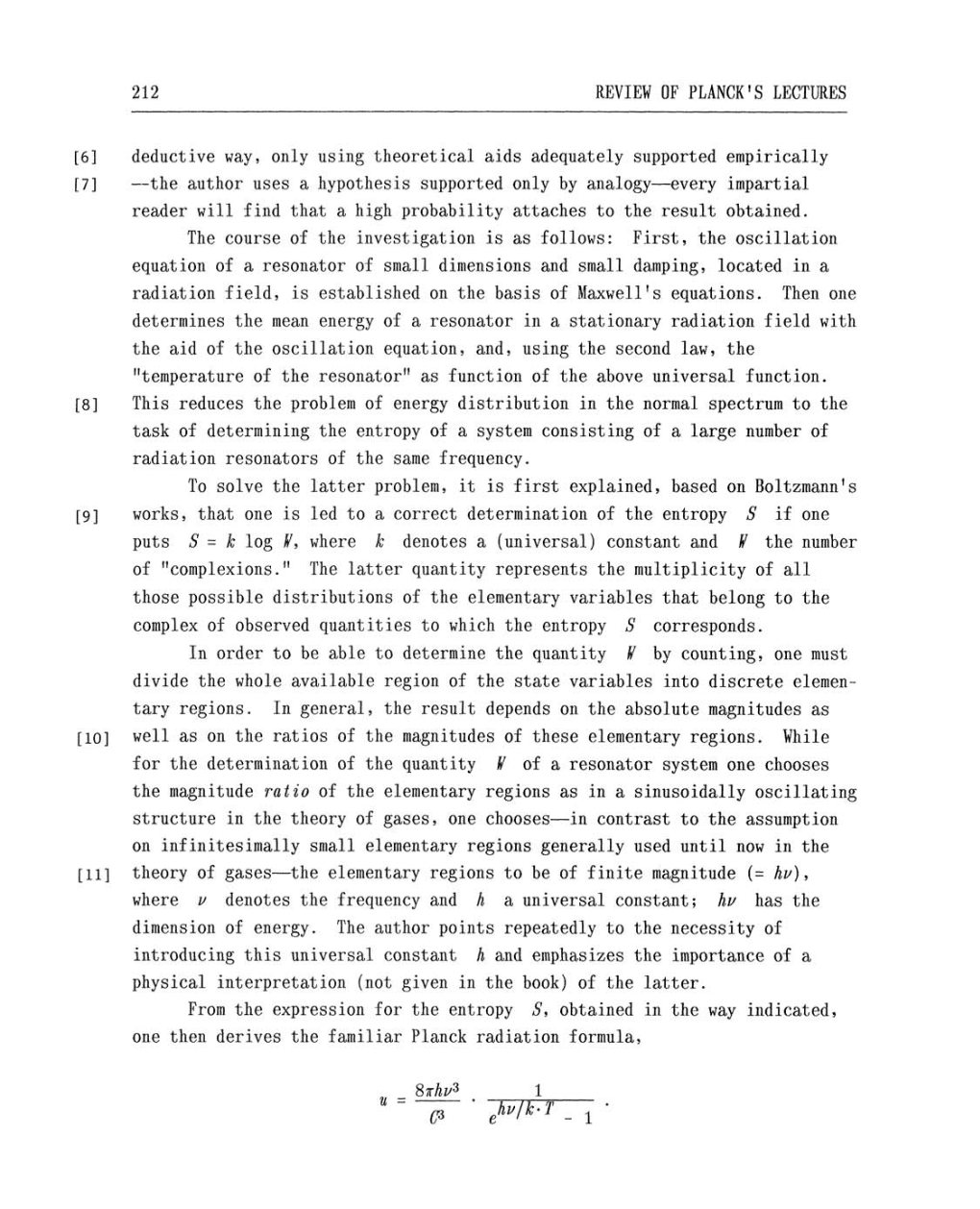212
REVIEW
OF
PLANCK'S
LECTURES
[6]
deductive
way,
only using
theoretical aids
adequately supported
empirically
[7]
-the author
uses a
hypothesis supported only
by
analogy-every impartial
reader will
find that
a
high
probability
attaches
to
the result obtained.
The
course
of
the
investigation
is
as
follows: First, the oscillation
equation
of
a
resonator of
small dimensions
and
small
damping,
located in
a
radiation field, is established
on
the basis
of Maxwell's equations.
Then
one
determines the
mean
energy
of
a
resonator
in
a
stationary
radiation field with
the aid of the oscillation
equation, and, using
the
second
law,
the
"temperature
of the resonator"
as
function
of
the
above
universal function.
[8]
This reduces the
problem
of
energy
distribution in the
normal
spectrum
to
the
task
of
determining
the
entropy
of
a
system
consisting
of
a
large
number
of
radiation
resonators
of the
same
frequency.
To
solve the latter
problem,
it is first
explained, based
on
Boltzmann's
[9]
works,
that
one
is led
to
a
correct
determination
of
the
entropy S
if
one
puts S
=
k
log
W,
where
k
denotes
a
(universal)
constant and
W
the
number
of "complexions." The
latter quantity represents the multiplicity of all
those
possible
distributions of the
elementary
variables that
belong
to
the
complex
of
observed
quantities to which
the
entropy
S
corresponds.
In
order
to
be
able
to
determine the
quantity
W
by
counting,
one
must
divide the
whole
available
region
of the
state
variables into discrete
elemen-
tary regions. In general,
the result
depends on
the absolute
magnitudes as
[10]
well
as on
the ratios
of
the
magnitudes
of
these
elementary regions. While
for
the determination
of
the
quantity
W
of
a
resonator
system one
chooses
the
magnitude
ratio
of
the
elementary
regions
as
in
a
sinusoidally
oscillating
structure
in the
theory of
gases,
one
chooses-in
contrast to
the
assumption
on
infinitesimally small
elementary
regions
generally used
until
now
in the
[11]
theory
of gases-the
elementary
regions to
be
of finite
magnitude
(=
hv),
where
v
denotes the
frequency
and
h
a
universal
constant;
hv
has
the
dimension of
energy. The
author
points repeatedly to
the
necessity of
introducing
this universal
constant
h
and
emphasizes
the
importance
of
a
physical
interpretation
(not
given
in
the
book)
of
the latter.
From
the
expression
for the
entropy
S,
obtained
in
the
way
indicated,
one
then derives the familiar Planck radiation
formula,
u
=
8ihv3
1
C3
hv/k-T
